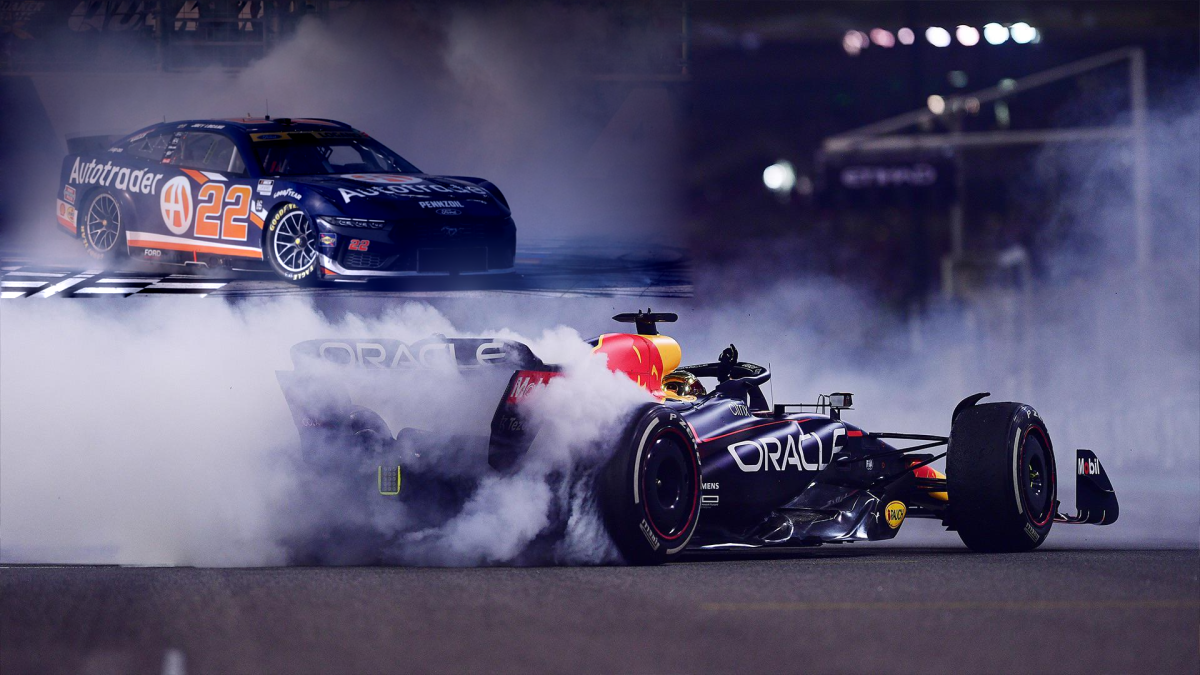While the world of motorsports is hugely varied, two of the most popular and frequently compared sports are Formula 1 and NASCAR. Although both are extremely famous and possess huge followings, I believe that Formula 1 is the superior form of motorsport…they don’t call it the “pinnacle of motorsport” for no reason.
Formula 1 is synonymous with advanced technology. Any Formula 1 car,regardless of the team it is designed by,is a wonder of automotive engineering. Formula 1 cars are built to be as fast, efficient, and as aerodynamic as possible. Each team invests millions of dollars into research and development, striving to expand the limits for what is possible in car design.
F1 cars boast hybrid engines and regenerative braking systems (aka ERS), and a network of data driven systems that monitor performance in real time. Each team is responsible for making their own innovations to their car. These upgrades throughout the season are the difference between winning or losing.
For example, McLaren Formula 1 Team introduced a new rear wing to their MCL38 at the Belgian Grand Prix. This rear wing was significant in the way that it flexed, it opened just enough to give the car a “mini DRS”, barely legal, but still incredibly efficient.
The high tech aspect is what makes Formula 1 races more exciting, but also works as a testbed for innovations that often find their way into consumer cars.
NASCAR emphasizes simpler and bulkier stock cars, while these designs are immensely powerful, they are much less technologically sophisticated. The base in their designs is older and deliberately limited in their advancements in order to maintain “competitive parity”.
Via NBC, Ross Chastain’s crew chief Phil Surgen said that “All the cars are the same, have the same range of adjustments, same group of parts. All the cars right now are essentially universal.”
To be fair, this provides fair competition for every driver, but also removes a large part of the competition for the teams.
Formula 1 is an overtly international event: with nearly every continent having another race.F1 has managed to captivate an international audience while being staged in several of the world’s most iconic cities, such as Monaco, Marina Bay, and Las Vegas.
It is this international nature that not only adds to the prestige of the sport, but also adds to its varied richness in culture. Viewers from around the world can tune into these events, therefore adding to the international appeal of the sport.
NASCAR is very much an American sport. While it has a passionate fan base within the United States, it lacks the global reach that F1 possesses.
Formula 1 drivers are considered to be the best in the world, as F1 essentially is a sport that requires a perfect blend of physical and mental acumen.
The circuits of F1 can be very complicated, requiring drivers to possess near instantaneous reflexes, immense endurance, and high adaptability with the continuous maneuvering between a combination of sharp corners. Furthermore, drivers deal with tire degradation, fuel usage, unpredictable weather conditions, as well as having to make split-second decisions at over 200 mph.
NASCAR drivers are talented in their own right, however, the repetitive nature of the oval shaped tracks significantly limit the variety of challenges they may face (left turn…left turn…left turn). While NASCAR does compete on some road courses, the bulk of the races are held on simple, banked ovals that emphasize sustained high speeds and bumper to bumper action.
Formula 1 is indeed as much a physical sport as it is a mental one. Race strategy plays a crucial role in determining the outcome of a Grand Prix race. Teams have to juggle tire compounds, pit stops, fuel management, and weather forecasts, often having to make adjustments in real time. The tiniest tactical decision by the teams can make or break whether a driver podiums or ends up outside of the points entirely.
While NASCAR is strategic on some levels- especially in fuel conservation and pit stops-it is less nuanced overall. NASCAR races are often determined by caution flags late in the race, whereby the element of luck seems to weigh so much heavier in determining a winner than anything else.
Although both Formula 1 and NASCAR have their merits, Formula 1’s emphasis on technological innovation, global appeal, driver skill, and strategic depth make it the superior motorsport. F1 offers a more dynamic, complex, and international racing experience that appeals to a much more diverse audience. While NASCAR thrives on its own as a uniquely American form of racing, Formula 1’s constant evolution and global outreach keep it at the pinnacle of motorsport.
While the world of motorsports is hugely varied, two of the most popular and frequently compared sports are Formula 1 and NASCAR. Although both are extremely famous and possess huge followings, I believe that Formula 1 is the superior form of motorsport…they don’t call it the “pinnacle of motorsport” for no reason.
Formula 1 is synonymous with advanced technology. Any Formula 1 car,regardless of the team it is designed by,is a wonder of automotive engineering. Formula 1 cars are built to be as fast, efficient, and as aerodynamic as possible. Each team invests millions of dollars into research and development, striving to expand the limits for what is possible in car design.
F1 cars boast hybrid engines and regenerative braking systems (aka ERS), and a network of data driven systems that monitor performance in real time. Each team is responsible for making their own innovations to their car. These upgrades throughout the season are the difference between winning or losing.
For example, McLaren Formula 1 Team introduced a new rear wing to their MCL38 at the Belgian Grand Prix. This rear wing was significant in the way that it flexed, it opened just enough to give the car a “mini DRS”, barely legal, but still incredibly efficient.
The high tech aspect is what makes Formula 1 races more exciting, but also works as a testbed for innovations that often find their way into consumer cars.
NASCAR emphasizes simpler and bulkier stock cars, while these designs are immensely powerful, they are much less technologically sophisticated. The base in their designs is older and deliberately limited in their advancements in order to maintain “competitive parity”.
Via NBC, Ross Chastain’s crew chief Phil Surgen said that “All the cars are the same, have the same range of adjustments, same group of parts. All the cars right now are essentially universal.”
To be fair, this provides fair competition for every driver, but also removes a large part of the competition for the teams.
Formula 1 is an overtly international event: with nearly every continent having another race.F1 has managed to captivate an international audience while being staged in several of the world’s most iconic cities, such as Monaco, Marina Bay, and Las Vegas.
It is this international nature that not only adds to the prestige of the sport, but also adds to its varied richness in culture. Viewers from around the world can tune into these events, therefore adding to the international appeal of the sport.
NASCAR is very much an American sport. While it has a passionate fan base within the United States, it lacks the global reach that F1 possesses.
Formula 1 drivers are considered to be the best in the world, as F1 essentially is a sport that requires a perfect blend of physical and mental acumen.
The circuits of F1 can be very complicated, requiring drivers to possess near instantaneous reflexes, immense endurance, and high adaptability with the continuous maneuvering between a combination of sharp corners. Furthermore, drivers deal with tire degradation, fuel usage, unpredictable weather conditions, as well as having to make split-second decisions at over 200 mph.
NASCAR drivers are talented in their own right, however, the repetitive nature of the oval shaped tracks significantly limit the variety of challenges they may face (left turn…left turn…left turn). While NASCAR does compete on some road courses, the bulk of the races are held on simple, banked ovals that emphasize sustained high speeds and bumper to bumper action.
Formula 1 is indeed as much a physical sport as it is a mental one. Race strategy plays a crucial role in determining the outcome of a Grand Prix race. Teams have to juggle tire compounds, pit stops, fuel management, and weather forecasts, often having to make adjustments in real time. The tiniest tactical decision by the teams can make or break whether a driver podiums or ends up outside of the points entirely.
While NASCAR is strategic on some levels- especially in fuel conservation and pit stops-it is less nuanced overall. NASCAR races are often determined by caution flags late in the race, whereby the element of luck seems to weigh so much heavier in determining a winner than anything else.
Although both Formula 1 and NASCAR have their merits, Formula 1’s emphasis on technological innovation, global appeal, driver skill, and strategic depth make it the superior motorsport. F1 offers a more dynamic, complex, and international racing experience that appeals to a much more diverse audience. While NASCAR thrives on its own as a uniquely American form of racing, Formula 1’s constant evolution and global outreach keep it at the pinnacle of motorsport.








